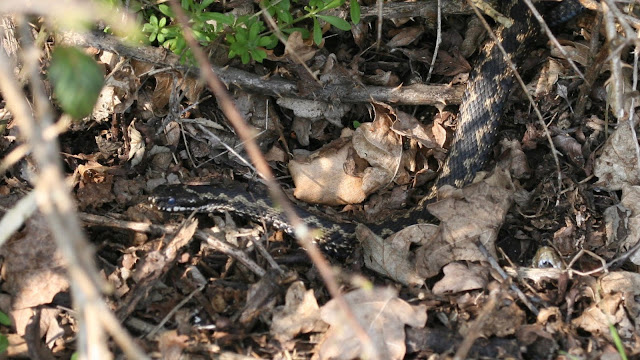I stomped around for a while not seen much apart from a fair selection of early-season butterflies, saw a man who sent me down a particular path, went down that path and had a look at a particularly promising south-facing leaf-litter strewn bank, saw nothing and stomped off. I rudely interrupted a couple on account of their large camera and asked if they'd seen any, whereupon they took me right back to that promising bank I'd just been looking at and pointed out two adders lying camouflaged in the leaves round the base of a bush!
We soon had a crowd of people looking at these splendid creatures. It was a complete range of people, all enthralled to see these creatures basking in the sun, even if well hidden. Several times there was a "no ... no .. can't see it, no ...yes! wow!!"
Another one was seen closer to the path, and I eventually got eye-ball to eyeball with it. Here's my "record shots"
And since when have Adder's eyes been blue? I guess a lid of some description being pulled down.
whilst concentrating on these, various bird noises were slowly percolating through my common bird filter. It took a while to realise I'd just heard a summer visitor, so a Sand Martin went through unseen, and then a Blackcap started up. It's all happening.









